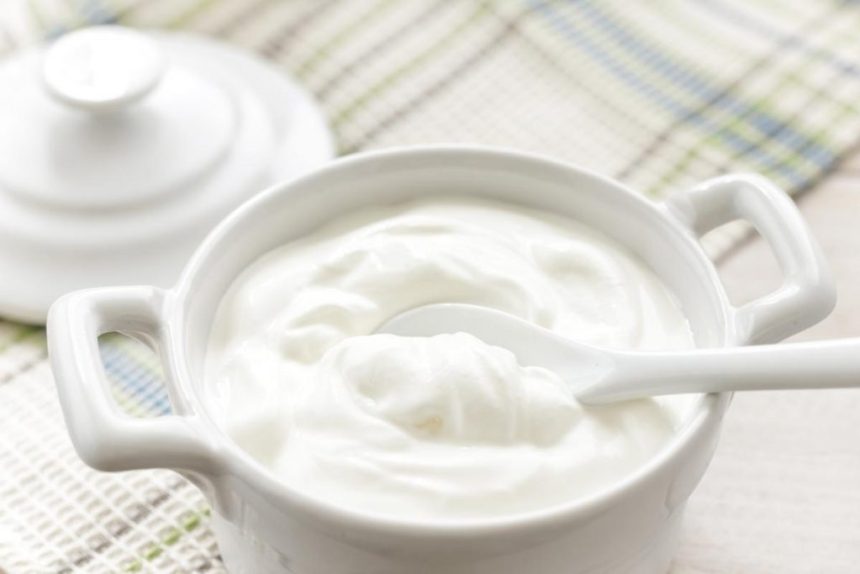Microwaving sour cream is a common cooking mistake that can lead to the product getting too hot and becoming curdled. If you want to use your microwave for something other than heating up leftovers, please read on to learn how best to avoid this issue!
What is Sour Cream?
Sour cream is a dairy product that is made from cultured milk. In order to create sour cream, manufacturers add lactic acid cultures to fresh milk and ferment it for hours before the mixture curdles. Manufacturers then pasteurize the sour cream for safety, and the finished product contains about 30% fat. Sour Cream can be used as a topping or ingredient in dips, salads, baked goods, and cooked dishes. It is also a common condiment on top of cooked potatoes and chili con carne. The flavor of Sour Cream has been described as mildly sweet with a slight tang from its lactic acid content.
Can You Microwave Sour Cream?
Sour cream is a popular addition to many recipes, including dips, casseroles, and baked goods. Can sour cream be microwaved? Yes, but it’s important to use proper precautions so that the texture and flavor of your sour Cream remain unaffected by the microwave process.
How To Microwave Sour Cream Safely?
- In order to microwave sour cream safely, you need to thaw it first either outside the refrigerator or in a designated thawing container.
- Place it in a bowl filled with cold water for several minutes until it is soft enough to scoop out of its container with ease.
- Once your sour Cream is properly thawed, place one tablespoon on top of wax paper (to prevent sticking) and heat it on high for 10-15 seconds.
- Then stir the sour Cream thoroughly, heat it again for 10-15 seconds, and stir once more to ensure even heating.
- Finally, microwave your sour cream for another 5-7 seconds until it has reached the desired consistency.
Since microwaves vary in strength, additional time may be required to reach the ideal consistency so use this method as a guide but continue to test your sour Cream after every few seconds of heating until you achieve your preferred result.
Tips For Microwaving Sour Cream
- Do not place unthawed sour cream into the microwave container — always thaw first before microwaving.
- Make sure that sour cream is heated evenly by stirring after each heating cycle and adding more cooking time as necessary.
- Microwave only small amounts of sour cream at a time to prevent overheating and curdling.
- Use caution when removing your sour Cream from the microwave — the bowl and wax paper will be hot!
- Do not place unthawed sour cream in the refrigerator after microwaving since this may promote bacterial growth.
Additional Sour Cream Hints And Ideas
To keep your sour cream fresher longer, avoid heating it in its original container or plastic bag. By transferring your sour cream into a glass bowl, you can heat it more easily and also forgo the use of potentially harmful chemicals found in plastic containers.
Be sure to stir frequently while heating to distribute heat evenly throughout your sour Cream. Do not heat your sour cream in the microwave for more than three minutes at a time. If it hasn’t reached your desired consistency after five minutes of heating, try stirring again and giving it another shot with an additional minute or two of cooking time.
If your sour cream begins to bubble and rise after you remove it from the microwave, stir vigorously before serving.
To create a thicker consistency in your Sour Cream while keeping all the flavor intact, add one tablespoon of buttermilk or yogurt while heating. This can be done with fresh or thawed Sour Cream. For a tangier taste, add a half teaspoon of lemon juice while microwaving to achieve a similar result.
Is it safe to eat warm sour cream?
Any type of dairy product should not be served to consumers if it is found to be heated past its recommended internal temperature. According to the United States Department of Agriculture, milk and milk products should be heated to 160 degrees Fahrenheit before serving.
While sour Cream can generally tolerate temperatures up to 150 degrees Fahrenheit, you must use proper precautions while microwaving Sour Cream so that this timeframe is not exceeded or compromised in any way. Microwaves vary in strength so their intensity may affect the outcome of your dish.
Be sure to monitor your Sour Cream carefully during heat cycles and always stir after each heating cycle to ensure even cooking results. Although these tips will give you the best chance at safe consumption of microwaved sour cream, use caution when serving and eating all heated dairy products just to be safe.
Can you reheat leftovers with sour cream?
There are many reasons why you should not reheat leftovers that contain sour cream. Previous research has shown that high-fat dairy products, such as Sour Cream, have an increased risk of being contaminated with bacteria after sitting out for several hours so there is no guarantee that your Sour Cream will be safe to eat if it has been refrigerated overnight or for several hours beforehand.
This is especially true if the product was not stored at proper temperatures before being put into the refrigerator. Although some strains of bacteria are relatively harmless and some may even be beneficial to your health, most people would prefer their food items to be free from contaminants just in case they happen to prove harmful down the line. This is especially true when dealing with delicate foods like sour Cream that are especially quick to spoil.
Sour Cream can also become extremely unappetizing if it is not stored properly. If you have left your Sour Cream out on the counter for several hours, its previously smooth texture can turn into a dry and crumbly mess that just isn’t very appealing. A curdled appearance may also develop which makes your sour cream seem unfit for consumption altogether. This type of damage cannot be reversed by reheating and the food item should be discarded immediately if these signs become apparent upon serving.
It’s safest to eat Sour Cream within two hours after preparing it and keep it refrigerated at all other times unless you plan on using an alternative like buttermilk or yogurt to make sour cream recipes instead of the real thing. This will guarantee a more appetizing outcome and a higher success rate for preparing your dish. Of course, if you do not have any of these alternatives on hand, it is important to consider the potential risks associated with consuming sour cream that has been left out at room temperature for several hours before serving.
Is Microwaving Sour Cream Different From Heating It In The Oven?
The answer to this question depends on how long you choose to heat your Sour Cream and at what temperature you decide to cook it at. In general, dairy products become extremely unsafe when they reach temperatures above 160 degrees Fahrenheit so keep an eye on them stir frequently while microwaving and always allow them to cool down thoroughly before consuming.
Sour Cream can generally survive temperatures up to 150 degrees Fahrenheit without sustaining too much damage but this timeframe is not guaranteed. Microwave ovens can produce some very intense and unpredictable heat cycles so it’s best to be on the safe side by heating Sour Cream in a conventional oven unless you know for sure that your microwave won’t overheat your dish and make it unsafe.
If you choose to use your microwave, set it at half power or less until you are familiar with its capability and ensure that you never leave your sour Cream unattended. Since microwaves cook unevenly, the outside of Sour Cream can become scalding hot while the inside of it remains colder than safe so it’s best to be very cautious when reheating this type of food in a microwave oven.
How To Store Leftover Sour Cream
Sour Cream can be stored in the refrigerator for up to three days after being opened. Make sure that you cover it tightly when putting it away so no foreign particles are accidentally introduced into the mixture and label your Sour Cream with its “use by” date. If you fail to do this, your Sour Cream could spoil before you have a chance to finish using it all. You may want to place Sour Cream in an airtight Tupperware container or plastic bag rather than storing it in its original container if there is any chance of leakage which can contaminate other nearby food items.
If Sour Cream develops an off odor, color, or texture, throw it out immediately without tasting because this means that harmful bacteria are likely growing inside of the item.
If your Sour Cream has been stored in the refrigerator properly and you haven’t opened or unsealed it, it can be frozen for up to two months and consumed safely after thawing under cold running water. However, do not refreeze Sour Cream once it has been defrosted or you will run the risk of ending with a very unpleasant texture.
How Long Is Sour Cream Safe To Eat?
The storage time of Sour Cream depends completely on how well you have treated the item while keeping it at room temperature. Under average conditions, store-bought sour cream should be perfectly fine to consume for about one week but this timeframe decreases significantly if the product is left out too long without being refrigerated. If you are at a party or a barbecue and don’t plan to eat all of your Sour Cream within a few hours, it is best to toss the leftovers instead of taking the risk of consuming spoiled Sour Cream.
If you have prepared Sour Cream from scratch at home using pasteurized whole milk and other heat-treated ingredients, there is no way for bacteria to grow inside of it so you can safely store leftovers in the fridge for up to two weeks. If you opt for this option, make sure that sour cream is always stored in an airtight container and never left uncovered because otherwise harmful germs may contaminate your food. Combined with proper storage, homemade Sour Cream generally has a much longer shelf life than store-bought varieties but it will begin to taste rather bland since it lacks stabilizers.







